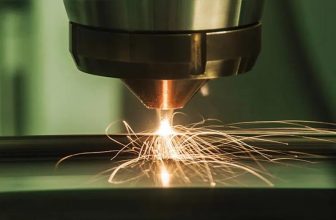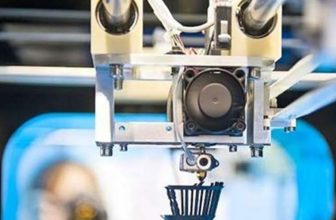
Metal additive manufacturing is a process in mold manufacturing, which needs to be combined with traditional processes such as milling and EDM to form a brand-new mold manufacturing process.
The 3d-printing-china.com processing plan puts forward the “7-step additive manufacturing conformal waterway mold”, which provides overall solutions for the injection mold manufacturing field including mold design, data preparation, printing, quality management, CNC preparation, machining, and wire cutting. In this micro-class, the 3d-printing-china.com processing plan is based on the application of its overall additive manufacturing solution in the manufacture of injection molds, the pain points in the processing of injection molds, the cost-effectiveness of metal additive manufacturing conformal cooling molds, and metal additive manufacturing Topics such as craftsmanship, design and materials were shared.
l Problems often encountered in traditional injection molding
During injection molding, incomplete filling and shrinkage may occur, and problems such as trapped air lines, water lines, and warping deformation may occur after the mold is opened.
In the past, statistical analysis of mold processing problems found that more than 50% of mold product quality problems were caused by improper temperature control. In order to better control the mold temperature, the conformal waterway process of additive manufacturing is introduced into the field of injection mold manufacturing.
In the we processing program, the design difference between the traditional linear waterway and the conformal waterway, and how the conformal cooling waterway changes the heat distribution in the micro-class, carried out an example analysis. In the application examples, we will see that the additive manufacturing of conformal waterway molds performs well during the use of the glue opening, and there is no wire drawing and glue entanglement.
New direction of metal 3D printing mold application
Mold air trapping is a common problem in the injection molding process. The product is lack of glue, black and scorched due to poor gas discharge. The traditional solution is to use a machined exhaust system and breathable steel materials.
The micro-class shared the challenges in the application of traditional exhaust systems and breathable steel, as well as the design innovation and performance advantages of metal additive manufacturing breathable molds.
The design of the conformal waterway and gas path mentioned above can be directly manufactured by additive manufacturing, but it can also be manufactured by grafting 3D printing. By grafting the CNC processing part and the 3D printed conformal waterway part, the processing efficiency of the conformable waterway mold can be improved and the cost can be reduced. We processing program has introduced a proprietary solution for the difficulties in achieving accurate positioning of grafted workpieces.
Case analysis of metal additive conformal waterway
In the case analysis session, we processing solutions shared application cases of metal additive manufacturing molds for electric toothbrushes, mobile phone charger shells, and automotive reflector headlamps.
The we processing plan uses the electric toothbrush conformal water injection mold case to analyze the water path redesign, mold flow analysis, water path length and parameter comparison, and actual injection effects including temperature analysis and cooling time comparison analysis in detail.
In the cost and benefit trial calculation of the electric toothbrush case, we compared the mold tact time of the traditional mold and the conformal cooling mold. Additive manufacturing of conformal cooling molds shortens the cooling time and plasticizing time, and the time saved will eventually be converted into benefits.
Next, the difference between the traditional mold core and the additive manufacturing mold core in terms of process and processing time is compared. The analysis results show that the total time required for the additive manufacturing mold core is 118 hours from the design to the final product. The total time of the traditional mold core is 144 hours. Then, the parameters of traditional mold core and additive manufacturing mold core are analyzed. The analysis data includes four dimensions of mold core volume (weight), cooling time, average deformation of injection molded products, and pass rate.
In the cost calculation of this case, our made calculations from three perspectives: injection molding machine cost, mold cost, and labor cost.
Process production of metal additive molds
The 3d-printing-china.com processing plan puts forward the “7-step additive manufacturing conformal waterway mold”, which provides overall solutions for the injection mold manufacturing field including mold design, data preparation, printing, quality management, CNC preparation, machining, and wire cutting.
The metal additive manufacturing equipment integrated in the overall solution-DMP Flex 350, is designed for high-precision direct metal printing and optimized for key applications that require complex parts and heavy metal parts, using the oxygen content in the industry The lowest vacuum printing chamber and improved airflow technology ensure the compactness and chemical purity of each part printed. The mold printed by this device has high density and good surface quality.
Introduction to the design principles and materials of the conformal waterway
We shared the key design rules of the metal additive manufacturing conformal waterway in the micro-class: the length of the waterway, the distance between the waterway and the die surface, and the cross-sectional area of the waterway.
At the end of the micro-class, we shared the commonly used printing materials and their performance in mold additive manufacturing.





